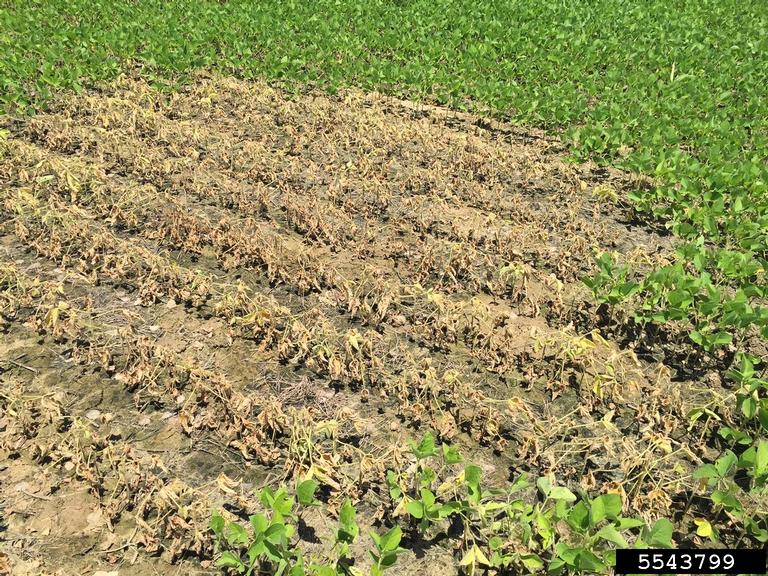By Andrew Kness, Agriculture Extension Educator
University of Maryland Extension, Harford County

As we move into the 2018 growing season, here are some tips for managing soybean diseases. They are all important points to consider, and are in no particular order of importance.
- Know what you’re up against. Don’t just guess at the cause of the problem; use the resources at your disposal to confirm the cause. The University of Maryland Extension Plant Diagnostic Lab is a great resource, as well as private labs. Your local extension agent can also help you diagnose a problem. Also, remember that other abiotic disorders such as drought, herbicide damage, nutrient deficiencies, etc., can sometimes resemble a biotic disease. Proper identification will help you implement the correct management tactics.
- Know your soybean variety. Pay particular attention to the disease and resistance (if any) ratings. Selecting varieties that are more tolerant or resistant to a particular disease will be a key part of your management moving forward. In fields where a particular disease is a recurring problem, selecting varieties that have resistance or tolerance (if available) should be a priority. Use University variety trial information (when available), in conjunction with the seed company ratings, to select the best seed for each field.
- Plant at the proper population. Pushing plant populations too high will result in a denser canopy, creating a much more humid and moist micro-climate within the canopy, which is an ideal environment for most plant diseases to develop. Research in Maryland has shown that full-season soybean plant populations should be targeted at 140,000 plants per acre and 180,000 plants per acre for double-crop production.
- Protect the top ⅓ of the canopy. The top third of the soybean plant contributes to nearly all of the carbohydrates necessary for grain fill, which is what determines your yield. Foliar diseases that infect the top third of the plant, if severe enough, can significantly affect yield. If foliar fungal diseases begin spreading to the upper third of the plants that are approaching flowering and pod fill, a fungicide application may be necessary to protect yield; however, economics and return on investment should be considered. Fungicides are relatively cheap now but you should still consider the economics; so before spraying, figure out how many bushels you need in return to warrant that application. During average years in Maryland, diseases are typically not severe enough to warrant a fungicide application for most of our foliar diseases of soybean. If they are, we generally achieve the best control of most foliar diseases when an appropriate fungicide is applied between R1 and R3. Always remember to read and follow the label, as well as rotate fungicide modes of action to curb disease resistance. The Take Action Pesticide-Resistance Management website has some great resources and tools to help make rotating modes of action quick and easy, including a searchable database and the Take Action Soybean Fungicide Classification Chart.
- Plant in ideal field conditions. Avoid having seed and seedling plants in soil that is cool and waterlogged. Waterlogged soils can lead to the development of stem and root diseases (Figure 1), which have no in-season cure once infection occurs. Also, if you’re using fungicide seed treatments, realize that they are only effective for approximately 2-3 weeks after planting. Practices that help reduce compaction and increase water infiltration will prevent your seedling soybeans from having “wet feet”, which is the driving cause of root and stem disease development. Planting into soils that are the proper moisture and temperature will go a long way in helping you manage many soybean diseases.
- Crop rotation and residue management. Since many of the major soybean diseases in Maryland overwinter on old soybean residue, planting soybeans back-to-back is not recommended. Breaking up the rotation with a small grain, corn, or another crop before returning to soybeans will allow the old soybean residue more time to decompose and kill off the pathogens that are overwintering in and on them. Likewise, a light tillage pass with a vertical till or turbo till tool to size old soybean residue will increase residue decomposition, reducing inoculum load in your field for future soybean crops.

Figure 1. Classic symptoms of post-emergence damping off in soybeans caused by root-rotting pathogens during an extended period of saturated soil conditions. Image: Cary Hicks, Bugwood.org.

